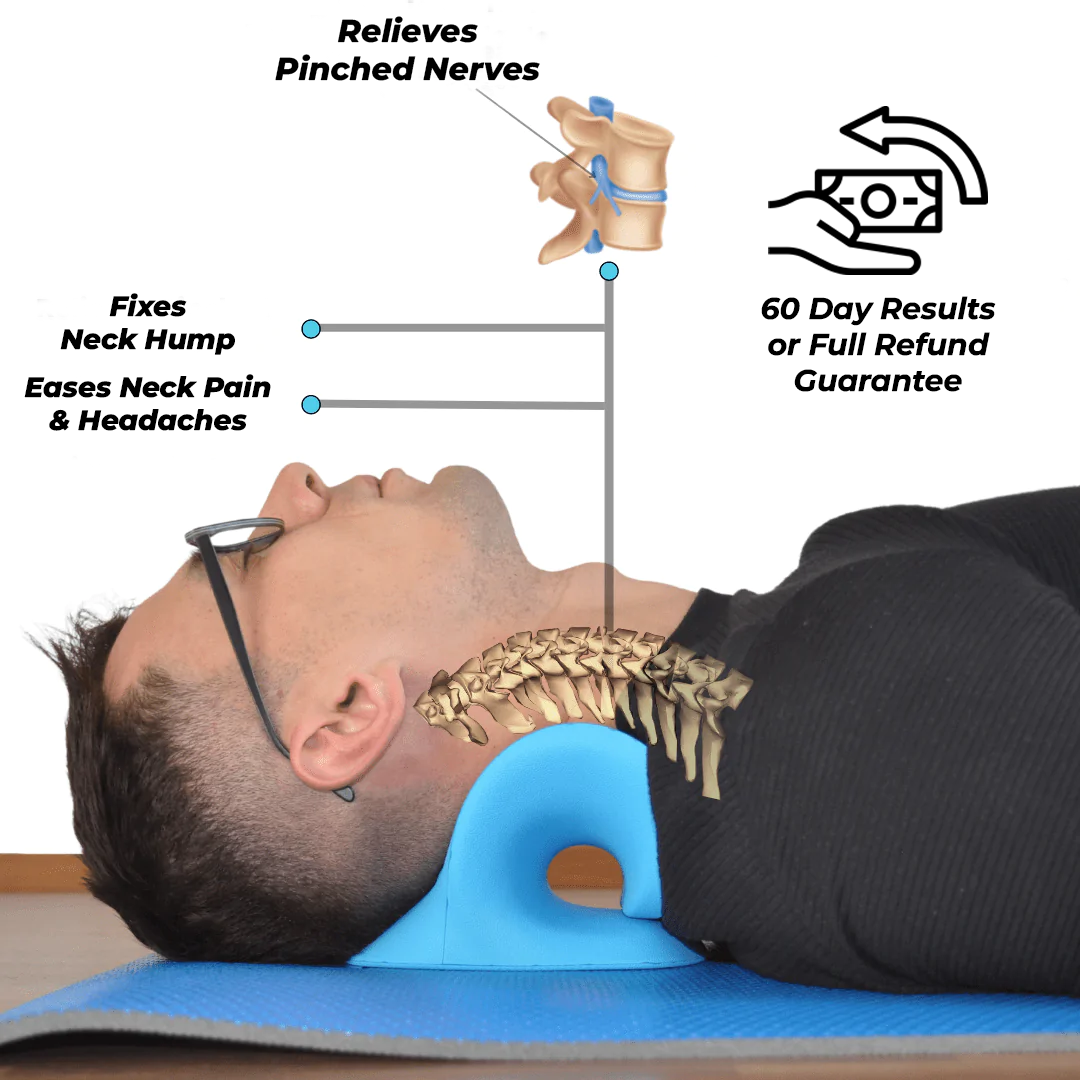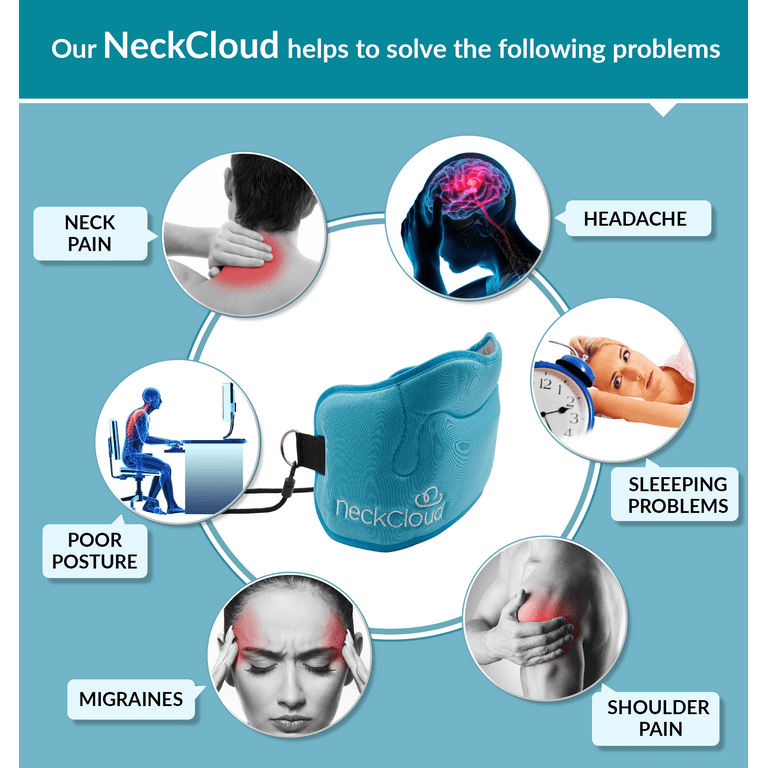Boost Your Stance and Decrease Neck Discomfort with the Neck Cloud
Boost Your Stance and Decrease Neck Discomfort with the Neck Cloud
Blog Article
Neck Discomfort in the Work Environment: Determining Risk Aspects and Implementing Ergonomic Solutions
Neck discomfort in the workplace is a common concern that can influence staff member well-being and productivity. By recognizing the various risk factors contributing to neck pain and executing ergonomic services, organizations can develop an extra conducive job atmosphere.
Usual Sources Of Neck Discomfort
Neck discomfort in the work environment is a prevalent issue that can be associated to several usual causes. Furthermore, repetitive motions such as regular flexing, twisting, or getting to can likewise contribute to neck pain over time.

Ergonomic Risk Aspects
Poor ergonomics in the work environment can dramatically add to neck discomfort among staff members. Factors such as inappropriate workdesk elevation, inadequate chair support, and uncomfortable positioning of computer monitors can all contribute in the growth of neck discomfort. When workers are forced to sit for extended durations in placements that strain their neck muscles, it can cause stiffness, pain, and much more significant bone and joint concerns gradually.
Additionally, inadequate ergonomic methods can result in staff members embracing awkward stances while functioning, such as craning their necks to see a computer screen or reaching uncomfortably for a mouse or keyboard. neck cloud. These repetitive movements and abnormal placements can place unnecessary tension on the neck and surrounding muscle mass, leading to pain and lowered productivity

Desk Configuration Recommendations
When establishing a desk in the work environment, it is vital to take notice of the ergonomics of the environment. To decrease the danger of neck discomfort and pain, there are a number of workdesk setup suggestions that workers must think about. To start with, ensure that the computer monitor is positioned at eye degree to avoid stressing the neck by seeking out or down. The keyboard and mouse should be put at a height where the arm joints are bent at a Click This Link 90-degree angle to advertise appropriate wrist alignment. Additionally, the chair elevation need to enable the feet to relax level on the flooring with upper legs alongside the ground.
It is likewise essential to have appropriate lighting to minimize eye pressure, as scrunching up your eyes or leaning ahead can bring about neck stress. Organize the workdesk format to keep frequently utilized things within arm's reach, limiting the requirement for recurring twisting or getting to activities. By executing these desk configuration recommendations, staff members can create a much more ergonomic workspace that supports neck health and minimizes the danger of developing job-related neck discomfort.
Stretching and Workout Tips
To preserve adaptability and decrease muscular tissue tension in the workplace, incorporating stretching and exercise regimens can be useful for general health and efficiency. Simple desk-friendly stretches can help ease neck discomfort and avoid tightness. Neck rolls, shoulder shrugs, and mild side-to-side neck stretches are effective in soothing stress. In addition, integrating workouts like chin tucks, shoulder blade squeezes, and upper back stretches can aid strengthen muscle mass that support great posture.
Setting tips or making use of apps that motivate motion can help develop a normal extending regimen. By prioritizing these activities, you can enhance your physical well-being, decrease the risk of neck discomfort, and boost your general efficiency in the workplace.
Significance of Routine Breaks
In a busy job setting where needs can add to physical pressures like neck pain, developing a regimen that emphasizes the relevance of normal breaks is critical (neck cloud). Taking normal breaks throughout the workday is necessary for minimizing and protecting against neck discomfort. Prolonged periods of resting or repeated tasks can cause muscle mass tension and rigidity in the neck and shoulders. By including brief breaks into the job routine, staff members can decrease the danger of creating neck discomfort and improve general convenience and productivity.
These breaks can additionally offer as a possibility for employees to practice leisure methods or gentle neck stretches, additionally promoting musculoskeletal health and wellness. Implementing a culture that values and focuses on regular breaks can have a substantial influence on lowering neck pain and improving overall health in the work environment.
Verdict
To conclude, click for more info attending to ergonomic danger aspects and carrying out correct workstation configurations are essential click site in lowering neck discomfort in the workplace. By promoting great position, offering ample assistance, and motivating routine breaks and stretches, companies can produce a much healthier and much more efficient workplace for workers. Focusing on employee wellness through ergonomic remedies is vital to avoid discomfort and enhancing total work environment fulfillment.
Neck discomfort in the office is a common problem that can affect employee health and performance. By identifying and dealing with these usual reasons of neck discomfort in the workplace, employers can take aggressive actions to create a much more ergonomic and comfy job atmosphere for their employees.
Poor functional designs in the work environment can substantially add to neck discomfort amongst workers. By applying these workdesk configuration recommendations, workers can produce an extra ergonomic work space that sustains neck health and wellness and lowers the danger of creating job-related neck pain.
Neck rolls, shoulder shrugs, and gentle side-to-side neck stretches are efficient in alleviating tension.
Report this page